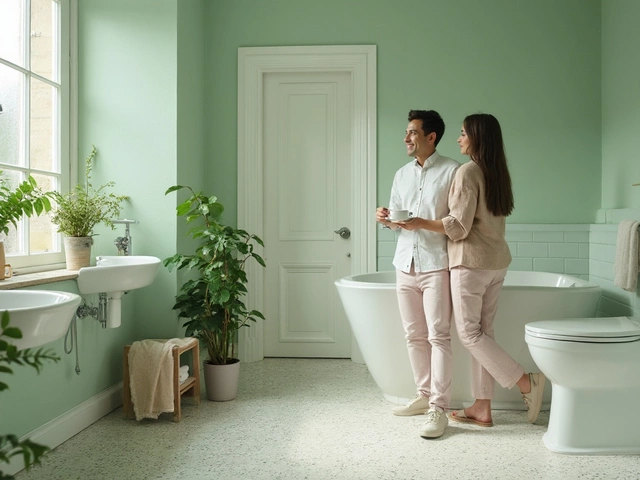Sofa Depth: How Deep Should a Sofa Be for Maximum Comfort?

Have you ever plopped down on a sofa and felt almost swallowed whole? Or maybe you sat on another and realized your legs were dangling, back begging for more support. It’s not just bad luck—sofa depth makes a huge difference in how comfy your couch actually is.
Most people don’t know that there’s a sweet spot for sofa depth, and it’s not one-size-fits-all. In most stores, you’ll see seat depths ranging from around 19 inches (that’s about the length of a sheet of paper) to 25 inches or even deeper. That range isn’t random. If you’re taller, you might love a deep, lounge-worthy 24-inch seat, while shorter folks often find 19 to 21 inches just perfect for keeping both feet on the floor.
Here’s a quick hack: sit with your back touching the sofa and your feet flat—does the seat reach to the back of your knees comfortably? If it pulls you forward or leaves your legs dangling, something’s off. That Goldilocks “just right” feeling has a lot to do with seat depth and your own height.
- Why Sofa Depth Matters
- Choosing the Right Depth for Your Body
- Deeper Sofas vs. Shallower Sofas: Pros and Cons
- Practical Tips for Testing Sofa Depth Before You Buy
Why Sofa Depth Matters
Sit on the wrong sofa for ten minutes, and you’ll quickly learn how important seat depth is. Too deep, and you’re leaning back like a slouchy teenager. Too shallow, and you sit perched on the edge, awkwardly tucking your legs under or dangling your feet.
The right sofa depth actually supports your body. When you sit with your back against the cushions, your knees should bend at a comfy angle and your feet should rest flat. Experts who design ergonomic furniture say the ideal seat depth for sofa comfort is usually between 20 and 24 inches, but the sweet spot depends on your height, posture, and whether you like sitting upright or lounging out with snacks and a movie.
| Seat Depth (inches) | Best for... |
|---|---|
| 19 - 21 | Shorter people, upright sitting |
| 22 - 24 | Taller people, lounging, nap lovers |
This isn’t just about feeling cozy for a few minutes—it’s about preventing backaches and stiffness after a Netflix session or marathon chatting with friends.
- If you have back pain or shorter legs, a shallower seat is usually more comfortable and supportive.
- Deep seats can be a dream for stretching out or cuddling, but younger kids and older adults often struggle with them.
- Cushion firmness matters too—too soft, and you end up sliding; too hard, and it feels like a bench.
The bottom line? Seat depth isn’t just a style thing, it’s essential for how relaxed (or miserable) you’ll be every night. Getting it right means you’ll actually look forward to sinking into your sofa.
Choosing the Right Depth for Your Body
Getting sofa depth right isn’t about copying what your neighbor bought—it’s about fitting the sofa to your own body. Here’s the thing: comfort depends on the distance from your back to your knees when you sit. Most people feel best when their hips, knees, and feet can rest naturally, and this is where sofa depth comes into play.
Quick fact—average seat depth for sofas in stores across the U.S. sits between 21 and 24 inches. If you’re over six feet tall, anything less can feel cramped, but if you’re under 5’6”, that same sofa might leave your feet dangling and your back unsupported.
| Person Height | Ideal Sofa Seat Depth |
|---|---|
| Under 5’4” (163 cm) | 19–21 inches |
| 5’4”-5’10” (163–178 cm) | 21–22 inches |
| Over 5’10” (178 cm) | 23–25 inches |
Before you walk into a store or hit “buy now,” try this at home: measure from the back of your butt to the back of your knees while sitting in your favorite chair. That’s close to your personal comfort number. Remember, seat depth is measured from the very front edge of the cushion to where your lower back hits the sofa.
Lifestyle matters, too. If you love curling up or stretching out, a deeper sofa has your name on it. If you’re more of a sit-upright-and-chat person, stick to average or shallow depths. For families, having a mix (deep for lounging, standard for sitting) often works best.
- If you share your sofa with others of different heights, try for a middle ground or add supportive throw pillows for flexibility.
- Sectionals often offer different depths along different seats—great if your crew has a variety in size.
- If possible, always test the sofa sitting down. A quick 2-minute sit can save years of awkward fidgeting.
Don’t forget posture—good support under your knees and for your lower back means less chance of aches later. It’s all about matching the sofa’s seat to your real, everyday body.

Deeper Sofas vs. Shallower Sofas: Pros and Cons
Let’s face it: not everyone wants the same thing out of their sofa. Some people want to sprawl out and sink in, while others want something that’s easy to get off of and good for posture. Here’s where deeper and shallower sofas really show their differences.
Sofa depth is all about how far the seat goes from the very front to where your back hits the cushion. Most deep sofas run between 23 and 25 inches, while shallower models hang out around 19 to 21 inches. This difference changes everything about how a sofa feels and fits your space.
Check out these major pros and cons:
- Deeper Sofas (23-25 inches): Awesome for taller people, families who love movie nights, or anyone who wants a couch you can nap on. They swallow you in comfort, but they can be tough for shorter folks who like their feet touching the floor while sitting upright.
- Shallower Sofas (19-21 inches): Perfect for formal spaces, neat posture, or smaller living rooms. Easier to stand up from and they don’t hog the room. Not ideal if you like to curl up sideways or have long legs.
Let’s put these details side by side:
| Type | Ideal For | Best Use | Drawbacks |
|---|---|---|---|
| Deep Sofas | Tall adults, lounging, families | Movie marathons, napping | Can feel too deep for short people, tricky in small rooms |
| Shallow Sofas | Shorter adults, kids, upright sitting | Formal rooms, easy sitting & standing | Less comfy for sprawling or tall people |
If your space is tight, a shallower sofa can save serious square footage. On the flip side, deep sofas can start to look (and feel) bulky if you try to squeeze them in somewhere they don’t fit.
Bottom line: Think about who will use the sofa most and how you love to sit. There’s no universal winner—just what works for your body, habits, and living room.
Practical Tips for Testing Sofa Depth Before You Buy
Shopping for a sofa isn’t just about style or color. If you want comfort, you’ve really got to test the sofa depth before committing. You don’t want to end up with a couch that feels awkward a week after delivery. Here’s how to figure it out in the store—or even while shopping online.
First things first: don’t just sit down briefly and hop up. Do this instead:
- Sit fully back. Slide your hips and lower back all the way to the rear cushion. This is how you’ll sit most of the time at home.
- Check your knees. Your knees should bend naturally, with your feet flat on the floor. Ideally, there should be no huge gap between the seat edge and the back of your knees—about two to four inches is perfect for most people.
- Try different positions. Everyone fidgets, so shift around—lean back, tuck up your legs, even try lounging sideways. Does the seat depth let you move comfortably?
For families or shared spaces, keep in mind different heights and preferences. If your partner is a foot taller than you, maybe compromise at a depth slightly above or below mid-range. For reference, here are some common seat depth numbers:
| Seat Depth (inches) | Best For |
|---|---|
| 19-21" | Shorter adults, kids, upright sitting |
| 22-24" | Average adults, versatile sitting |
| 25-27" and up | Tall adults, loungers, naps |
Trying online? Check user reviews for mentions of seat depth and look for photos with people actually sitting. Sometimes, real-life pics and feedback are way more helpful than numbers alone.
Last tip—bring a friend. They’ll spot things you might miss in the excitement (like your feet dangling awkwardly off the floor). And hey, two opinions mean double the chances of picking a winner.





